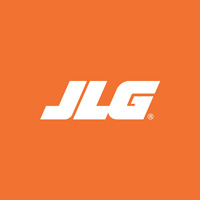 JLG Industries, Inc.
JLG Industries, Inc.
World-leading access equipment manufacturer
____
McConnellsburg, PA
Located in Fairbanks, Alaska, the University of Alaska Fairbanks (UAF) is the flagship campus in the University of Alaska system. As the school’s Facility Services safety officer, Robert Miller is responsible for building and infrastructure maintenance at the Fairbanks campus and at 10 outlying campuses throughout the state.
According to Miller, these campuses boast more than 300 buildings. “So anything I can do to impact the way we work, whether we’re talking about efficiency or safety, has far-reaching implications across the state.” As an example, Miller points to the use of the FS80 LiftPod® from JLG.
Miller was first introduced to the aerial work platform five years ago while attending an American Society of Safety Engineers (ASSE) conference. As he watched a demonstration of the machine, he quickly recognized its potential for the UAF campus.
“One of the things that I attempt to do here on campus is to minimize the use of ladders and the risk of falls associated with them,” said Miller. “Whenever we can, we use scaffolding or lift machines, making it easier for technicians to carry things to their work area without worrying about keeping the required three points of contact on a ladder. However, neither system is as compact or convenient to use as the LiftPod.”
In fact, it was the portability of the LiftPod that immediately appealed to Miller. “Whenever we use a larger piece of equipment, we need to plan ahead to have the lift delivered to a particular location. That’s because it takes a two-person team and a trailer to move the lift into position. And then, when the work is complete, another two-person team and trailer are required to move the lift to its next location.
"With the LiftPod, one person can easily disassemble and transport it from location to location. And in many cases, they don't even have to disassemble it. As a result, I would venture to say we have cut our man hours by about two-thirds, just by using the smaller, more compact LiftPod."
With the LiftPod, one person can easily disassemble and transport it from location to location. And in many cases, they don't even have to disassemble it. As a result, I would venture to say we have cut our man hours by about two-thirds, just by using the smaller, more compact LiftPod.
Tackling Work in Tight Spaces
Miller purchased the university’s first LiftPod shortly after the demonstration at the ASSE conference. After trying it out first himself, he demonstrated it to trades people at the university, who quickly saw how useful it could be to them in the work they do, providing a working height of 14 feet and a 360-degree range of motion. In fact, the utilities division was so impressed that they purchased two of the work platforms.
“The spaces where they work, especially in the power plant and mechanical rooms, are often confined. They have to work around a lot of pipes and other pieces of equipment that limit the floor space,” Miller explained. “Scaffolding is difficult to erect there, and ladders, although they may fit, do not offer the stability that is required. So the LiftPod lends itself well to work in this area.”
Another area that benefits from the use of the LiftPod is the university’s pool deck, where limited space makes it difficult to use most other lifts. “We use it for accessing some of the lower ceilings to reset ceiling tiles, change lights, perform scoreboard maintenance and clean walls, among other things,” said Miller. “It's a very narrow area, and with a drive-around lift, there is always the possibility of putting a lift in the pool. The LiftPod can be moved manually from point to point, and it has a much smaller footprint, which together make it a great option for us.”
It's a very narrow area, and with a drive-around lift, there is always the possibility of putting a lift in the pool. The LiftPod can be moved manually from point to point, and it has a much smaller footprint, which together make it a great option for us.
Meanwhile, plumbers and electricians are also benefiting from the LiftPod as they access overhead areas to change lights and ballasts, attend to heating, air-conditioning and ventilation (HVAC) maintenance and perform other maintenance tasks. “And as they do these things, technicians are finding they have much less leg fatigue,” added Miller. “That’s because they don’t have to balance and stand on narrow ladder steps.” Instead, they are enjoying the stability of the machine’s 24- by 22-inch work platform and an accessory tray that can hold up to 33 pounds.
A Cold Temperature Solution
One other benefit that is particularly important to the university’s location is the fact that, unlike most lift devices, the LiftPod does not rely on hydraulics to operate. With temperatures in Alaska dropping low, hydraulic-driven devices can have issues with seals and performance. “That means that when we need to move one of these lifts from one building to another, we have to let it sit inside for a couple hours to warm up before we can use it without the risk of blowing seals. That’s lost time waiting and extra maintenance hours if we do have a problem with the seals. Fortunately for us, this is not an issue with the LiftPod.”
Today, Miller knows the university owns four LiftPods, but adds that there may be additional machines purchased by other divisions and campuses. “It’s kind of a universal product for us, because it has allowed us to replace ladders in almost every application under a 14-foot reach. We have significantly reduced the need to use step ladders, including our small roll-around platforms, because this one product works for us in almost every application.”